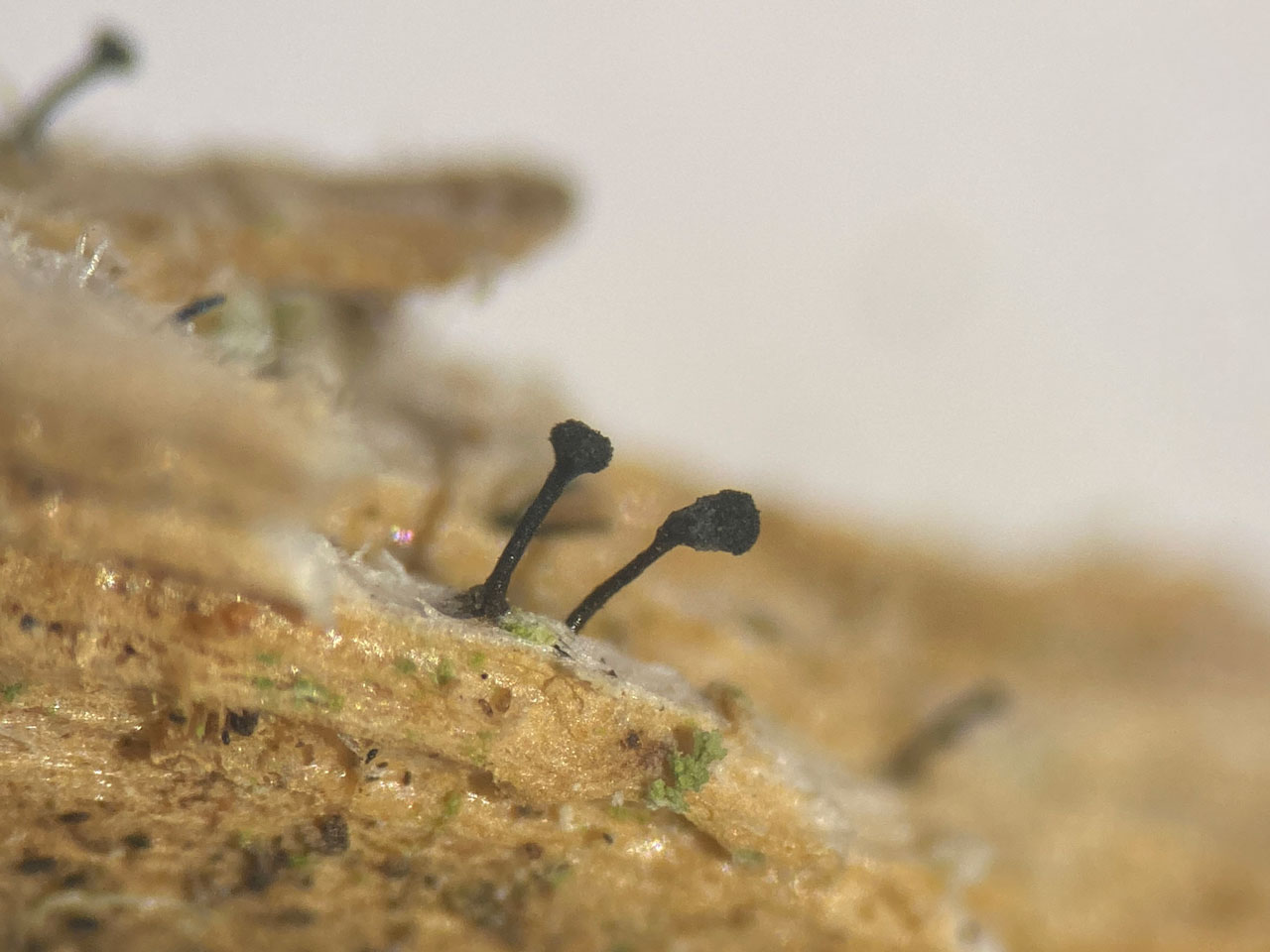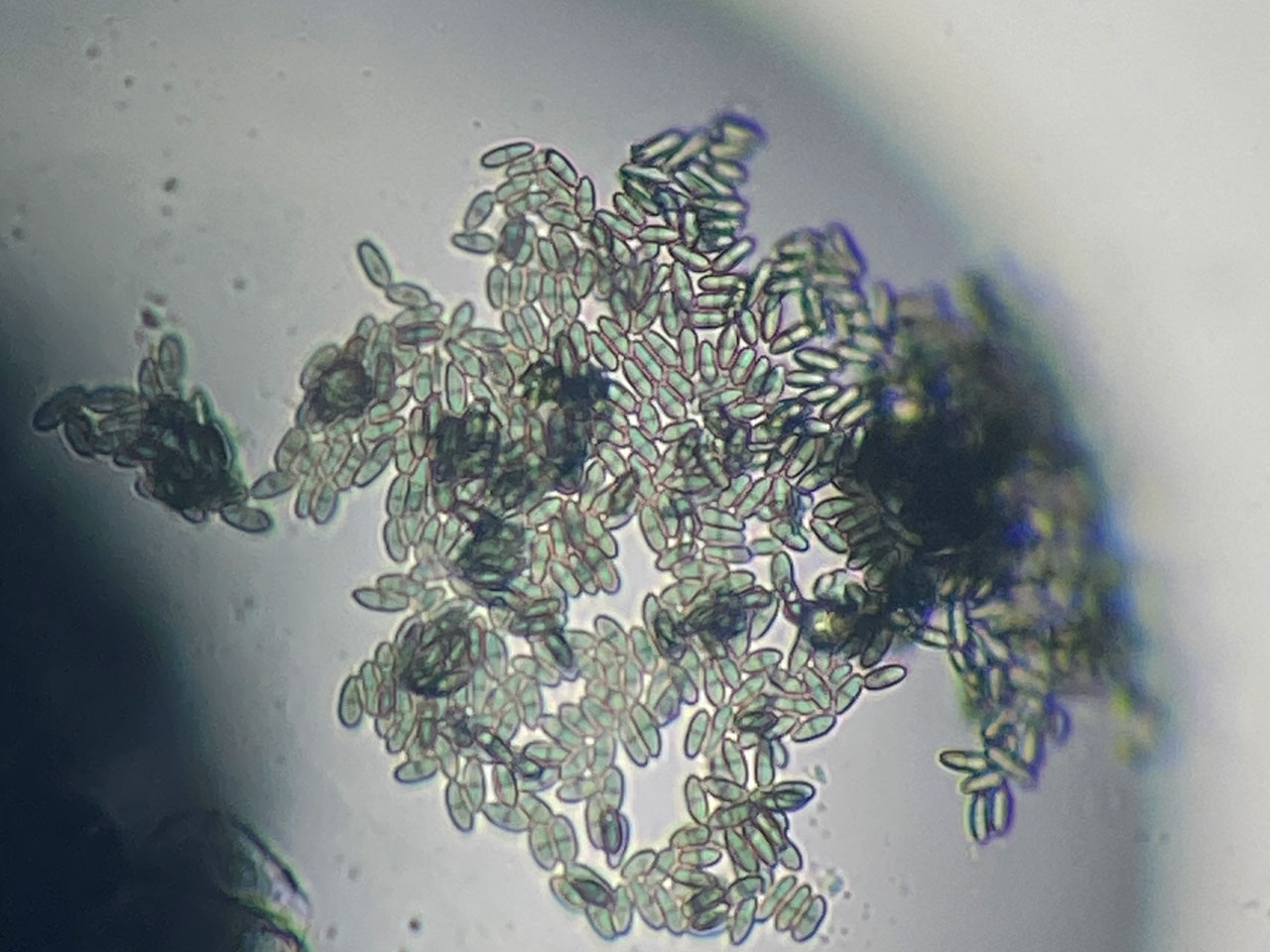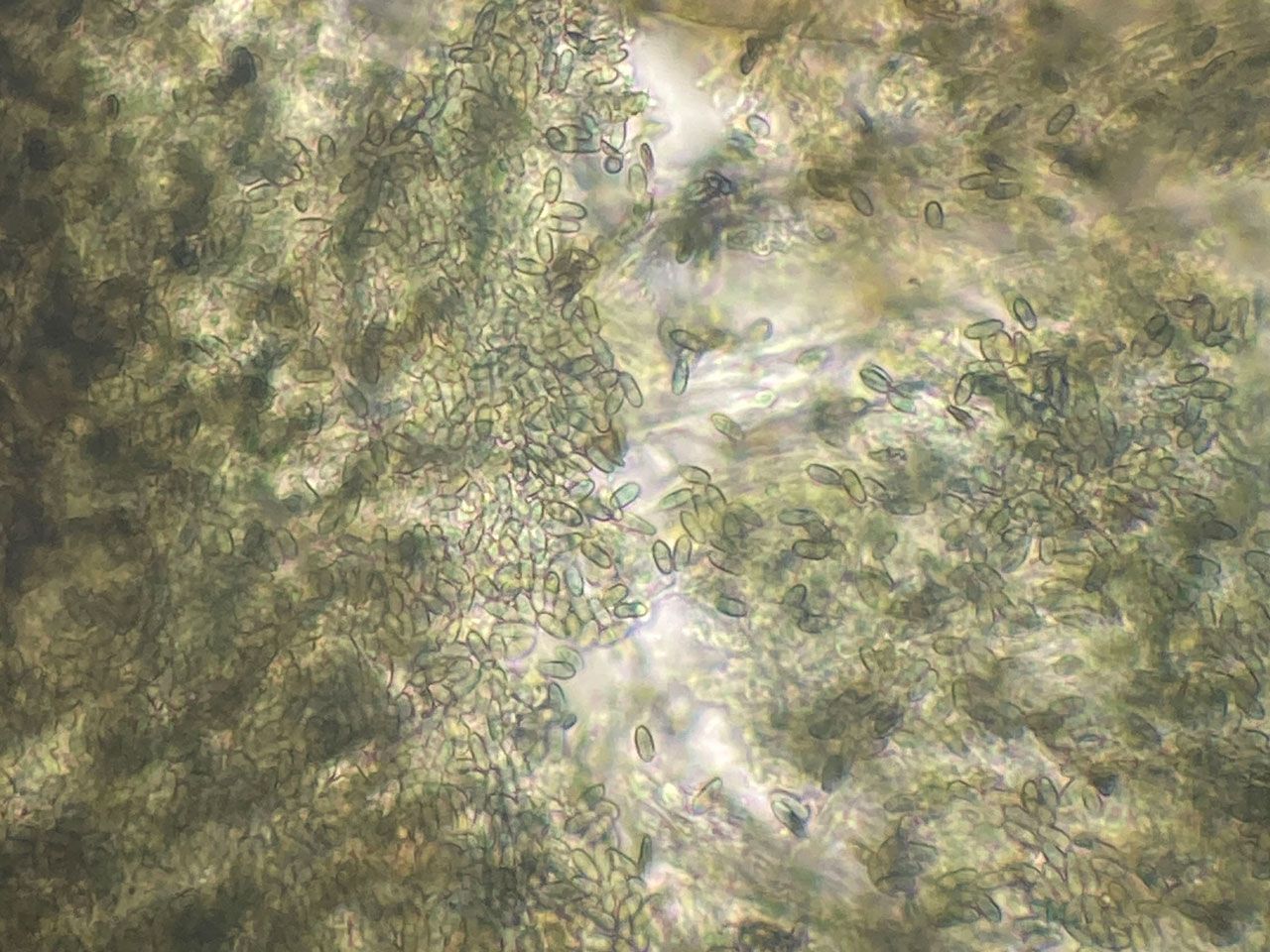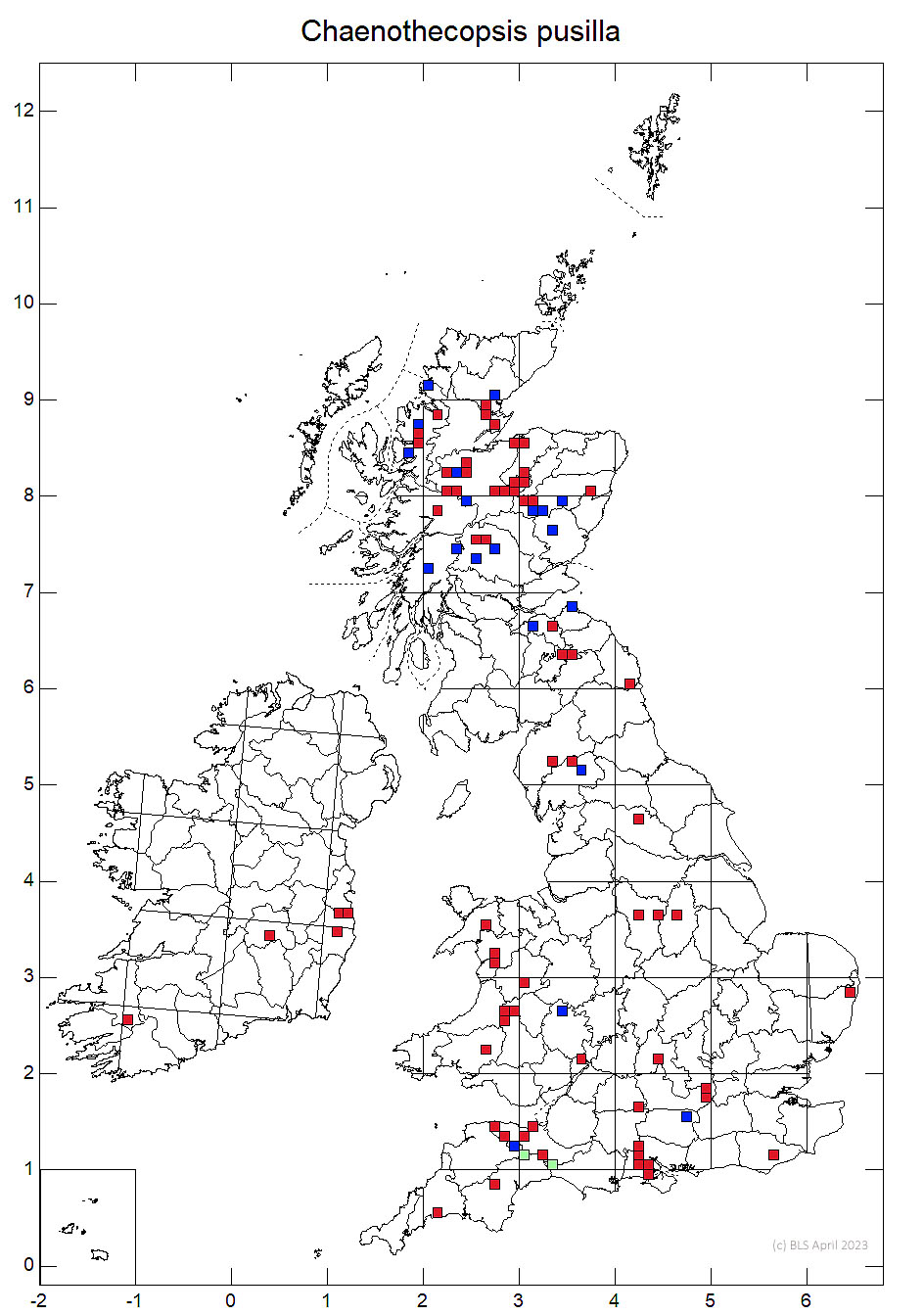Chaenothecopsis pusilla
A widespread but scarce Chaenothecopsis species, found on standing or part fallen weathered lignum in sheltered conditions, usually in old growth pasture woodland or old parklands. Separated microscopically by the medium brown one septate spores, with a thin septum, that is much paler than the spore wall.
Apothecia 0.5–0.9 mm tall, black or more usually with the stalk greenish or grey-brown below, not pruinose or occasionally ± white-pruinose; head 0.2–0.3 mm diam., lenticular; epithecium thin, greenish to brown; hypothecium pale or greenish to brownish; stalk 0.04–0.08 mm diam.; internally dull greenish or brownish, swelling in K, K–, N–. Ascospores 6–7 × 2–2.5 µm, 1-septate, medium brown, septum thin, much paler than the spore wall; surface ± smooth.
This is probably an aggregate of a number of species, the true identity of which is still to be confirmed. Of other GBI taxa, Chaenothecopsis nigra, has septa that are darker than the cell wall, C. debilis & C. tasmanica have septa the same thickness as the spore wall, C. savonica has lighter coloured, aseptate spores, and C. vainioana has more slender apothecia with longer spores. Some unidentified collections are like C. pusilla but have entirely black stalks and are associated with Stichococcus. They have been found on wood of Alder and Pine in S. England and Scotland (C. & E. Highlands).
On wood of various trees (e.g. Alder, Birch, Sweet Chestnut, Oak, Pine); associated with globose-celled algae, sometimes apparently parasitic on Calicium glaucellum.

Scattered throughout Britain, a few records from S. Ireland.
A widespread but scarce Chaenothecopsis species, and usually less frequent than Chaenothecopsis nigra. Found on standing or part fallen weathered lignum in sheltered conditions, usually in old growth pasture woodland or old parklands. Increasing shade in woodland is a potential threat.
Sanderson, A., Cannon, P., Coppins, B., & Simkin, J. (2025). Mycocaliciales: Sphinctrinaceae, including Chaenothecopsis, Mycocalicium, Phaeocalicium, Sphinctrina and Stenocybe. Revisions of British and Irish Lichens 52: 1–15.
Text by Neil A Sanderson based on Sanderson et al (2025)



